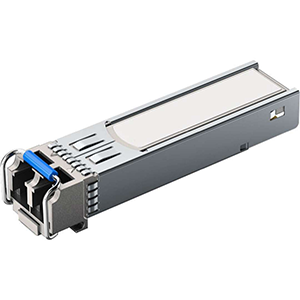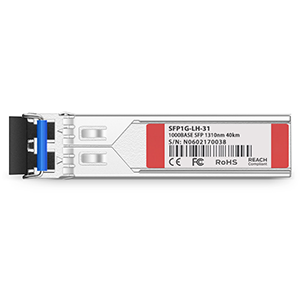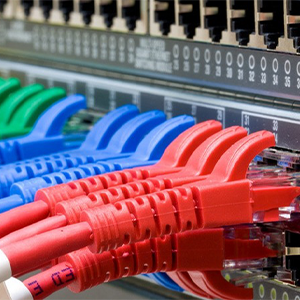Network splitters play a key role in signal transmission. This article will compare two advanced splitting technologies: programmable splitters and smart splitters. We will first define the role of splitters and introduce their common types. Next, we will describe the characteristics of programmable splitters and smart splitters respectively.
Programmable splitters control the splitting ratio through programming to achieve dynamic and flexible signal distribution; while smart splitters have the ability to sense and adjust themselves, and can automatically optimize splitting according to environmental changes. Finally, we will compare the differences between the two splitters in terms of technical implementation and application scenarios.
Basic concepts of splitters
A splitter is a circuit element that is mainly used to distribute an input signal to multiple output channels. It is widely used in communications, broadcasting, data transmission and other fields to achieve signal distribution and management. Through splitters, signal resources can be effectively allocated to different devices or systems.
Define the role of a splitter:
A splitter is a network device that is mainly used to distribute a single signal to multiple output ports. Its main functions include:
(1) Distribute a single signal to multiple output ports:
- A splitter can distribute an input single signal or power signal to multiple different output ports.
(2) Effectively distribute and transmit signals:
- A splitter ensures that each output port can obtain sufficient signal strength and quality.
- This ensures that the signal is effectively transmitted on different output lines.
Introduction to common types of splitters:
Depending on the working principle, splitters can be divided into the following two types:
(1) Passive splitters:
- Passive splitters do not require external power to work.
- They usually use passive devices (such as couplers, switches, etc.) to achieve the splitting function.
(2) Active splitters:
- Active splitters require external power to work.
- They usually use active electronic devices (such as amplifiers, switches, etc.) to achieve signal distribution.
Passive splitters have a simple structure and low cost, while active splitters can provide better signal isolation and gain. Different types of splitters are suitable for different application scenarios. In short, a splitter is a network device used to distribute a single signal to multiple outputs, achieving effective signal distribution and transmission while ensuring signal quality.
Features of programmable splitters
Programmable splitters have flexible signal distribution functions, allowing users to set the configuration of output channels through software programming. Its features include supporting dynamic adjustment, realizing complex signal routing and switching, and providing a high degree of customization. It is suitable for scenarios that require flexible signal management.
Basic principles of programmable splitters:
Unlike traditional fixed splitters, programmable splitters have the ability to dynamically adjust the split ratio. Its basic working principle is as follows:
(1) Control the split ratio through programming:
- The programmable splitter integrates programmable signal processing circuits.
- The signal distribution ratio of each output port can be dynamically adjusted through programming control.
(2) Realize dynamic and flexible signal distribution:
- The programmable splitter can flexibly adjust the signal distribution method according to actual needs.
- This dynamic distribution function improves the flexibility and efficiency of signal utilization.
Main advantages of programmable splitters:
Compared with traditional fixed splitters, programmable splitters have the following main advantages:
(1) Strong adaptability and can be adjusted according to needs:
- The programmable splitter can dynamically adjust the signal distribution ratio according to changes in application scenarios.
- This flexibility greatly improves the adaptability of the splitter.
(2) Improve signal utilization efficiency and quality:
- The programmable splitter can intelligently distribute according to the actual situation to avoid wasting signal resources.
- At the same time, it can also better guarantee the signal quality of each output port.
In short, the programmable splitter has obvious advantages in flexibility and signal utilization efficiency by virtue of its function of dynamically adjusting the split ratio. It is suitable for application scenarios with frequent demand changes or high signal quality requirements.
Features of intelligent splitters
The intelligent splitter combines automation and intelligent control technology, can monitor the signal status in real time, and automatically adjust the distribution plan according to preset conditions. It supports remote management, fault diagnosis and optimized configuration, and is suitable for efficient signal management in complex network environments.
Core concept of intelligent splitter:
Intelligent splitter is a splitter device with sensing and self-regulation capabilities. Its core features include:
(1) With sensing and self-regulation capabilities:
- Intelligent splitters can sense changes in the environment and signal conditions.
- Based on the sensing results, it can autonomously optimize the splitting strategy and dynamically adjust the signal distribution.
(2) Automatically optimize splitting according to environmental changes:
- Intelligent splitters can monitor signal quality in real time and automatically adjust the splitting ratio according to environmental changes.
- This autonomous optimization capability improves splitting efficiency and signal quality stability.
Typical functions of intelligent splitters:
Intelligent splitters usually have the following core functions:
(1) Automatic detection of signal quality:
- Intelligent splitters can monitor the quality indicators of input signals in real time, such as power, noise, etc.
(2) Intelligent distribution and balancing of signals:
- Based on the perception of signal quality, the splitter can automatically adjust the distribution ratio of each output port.
- This ensures that each output port obtains a balanced and high-quality signal.
(3) Remote monitoring and management:
- Intelligent splitters usually have network connection functions and support remote monitoring and management.
- Managers can remotely monitor and adjust the working status of the splitter in real time.
In short, the intelligent splitter has the core capabilities of sensing the environment and optimizing the splitting autonomously. It provides enhanced functions in automatic detection, intelligent distribution and remote management, and is suitable for scenarios that require efficient and stable signal distribution.
Comparison between programmable splitters and intelligent splitters
Programmable splitters focus on flexible signal distribution through software configuration, while intelligent splitters combine automation and intelligent control to automatically adjust and optimize the distribution plan. Intelligent splitters are more suitable for complex and dynamic network environments. However, there are some differences in technical implementation and application scenarios:
Differences in technical implementation:
(1) Programmable splitters require manual programming:
- Programmable splitters require manual programming to adjust the split ratio.
- Users need to manually input control instructions or parameters to change the splitting strategy.
(2) Intelligent splitters have autonomous sensing and adjustment:
- Intelligent splitters have built-in sensing and autonomous adjustment functions.
- It can automatically detect signal quality according to environmental changes and dynamically optimize split strategies.
Different application scenarios:
(1) Programmable splitters are suitable for fixed requirements:
- Programmable splitters are suitable for scenarios with relatively fixed requirements.
- Users can set appropriate split ratios based on fixed requirements.
(2) Intelligent splitters are suitable for dynamic environments:
- Intelligent splitters are more suitable for scenarios where the environment and requirements change dynamically.
- It can automatically sense changes and adjust splits in real time to adapt to new environments.
In short, programmable splitters require manual programming and adjustment, and are suitable for fixed demand scenarios; while intelligent splitters have the ability to sense and adjust autonomously, and are more suitable for dynamic and changing environments. The two splitters have their own characteristics and play different advantages in different application scenarios.
Summary
Programmable splitters and intelligent splitters provide innovative solutions for network signal transmission. Our company has long focused on the research and development and application of network technology and has rich practical experience. We provide powerful splitter products that are widely used in various network scenarios such as radio and television, telecommunications, and military industry.
Our splitters use industry-leading technical solutions and have achieved excellent levels in signal quality, energy efficiency, and remote management. At the same time, our team of engineers will provide you with professional demand analysis and solution design services to ensure that the deployed splitter solution can meet your actual needs to the greatest extent. Contact us now to learn more.
Programmable Splitters And Smart Splitters FAQ
A programmable splitter is a device that allows you to control and configure how signals are split or routed through software or firmware settings. It can be customized to meet specific requirements.
A smart splitter typically includes additional features such as automatic signal adjustment, monitoring, and intelligent routing based on signal conditions. It often has built-in intelligence to optimize performance without manual configuration.
Yes, programmable splitters can often be updated or reconfigured through software updates or settings changes, allowing for flexibility and adjustments as needed.
Smart splitters offer benefits such as automatic signal management, real-time monitoring, and adjustments based on signal quality. This can lead to improved performance and reduced manual intervention.
Programmable splitters can be more expensive than traditional splitters due to their advanced features and customization capabilities. However, the cost can be justified by the added functionality and flexibility.
Programming a programmable splitter typically involves using a software interface or configuration tool provided by the manufacturer. You can set parameters such as signal strength, routing preferences, and other options.
Yes, many smart splitters have built-in algorithms to automatically adjust signal levels based on real-time analysis, ensuring optimal performance without manual intervention.
Both programmable and smart splitters can handle various types of signals, including audio, video, and data signals. The specific capabilities depend on the splitter’s design and intended use.
Compatibility issues can arise if the programmable splitter does not support the signal types or formats used by your devices. Always check the specifications and compatibility requirements before purchase.
Consider factors such as the complexity of your signal distribution needs, budget, required features, and whether you need automatic adjustments or manual programming. Evaluate how each type of splitter aligns with your specific requirements.





